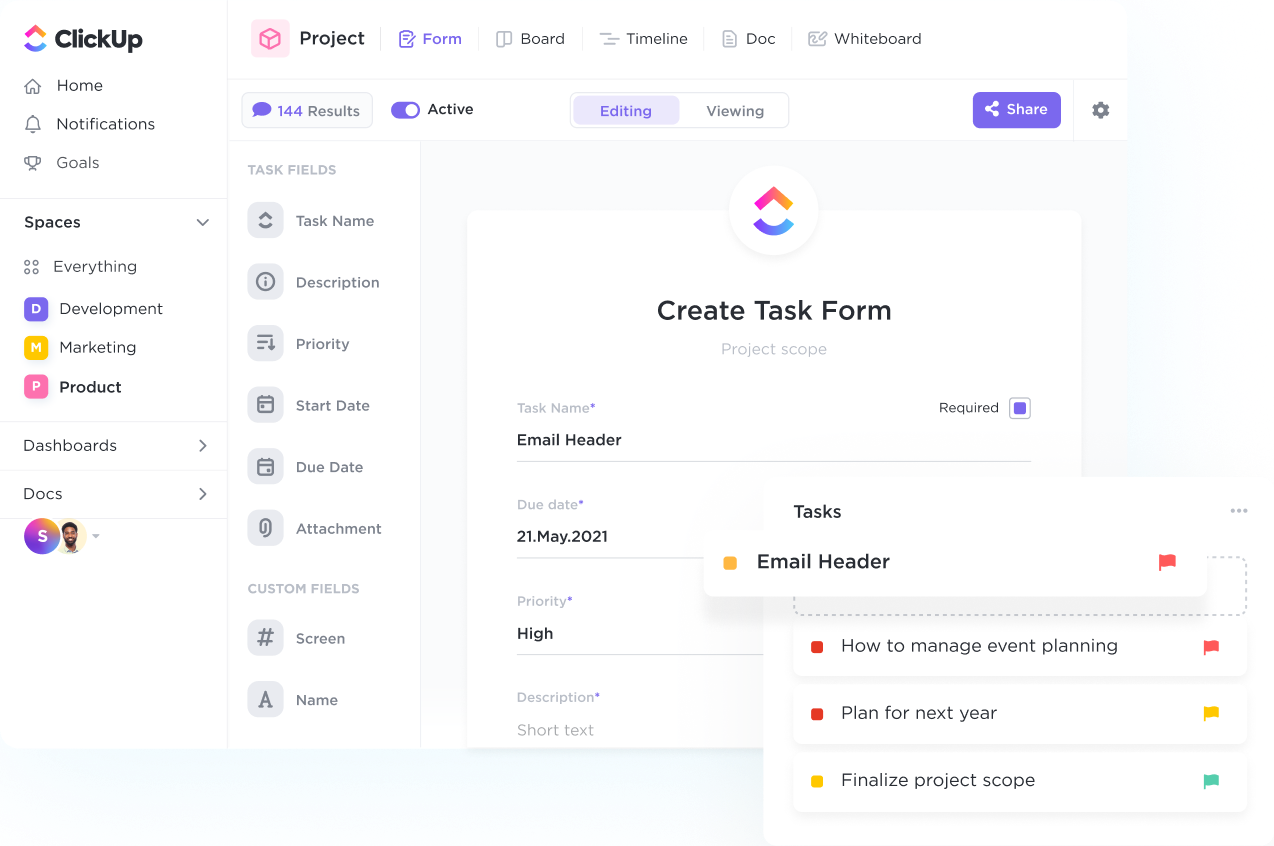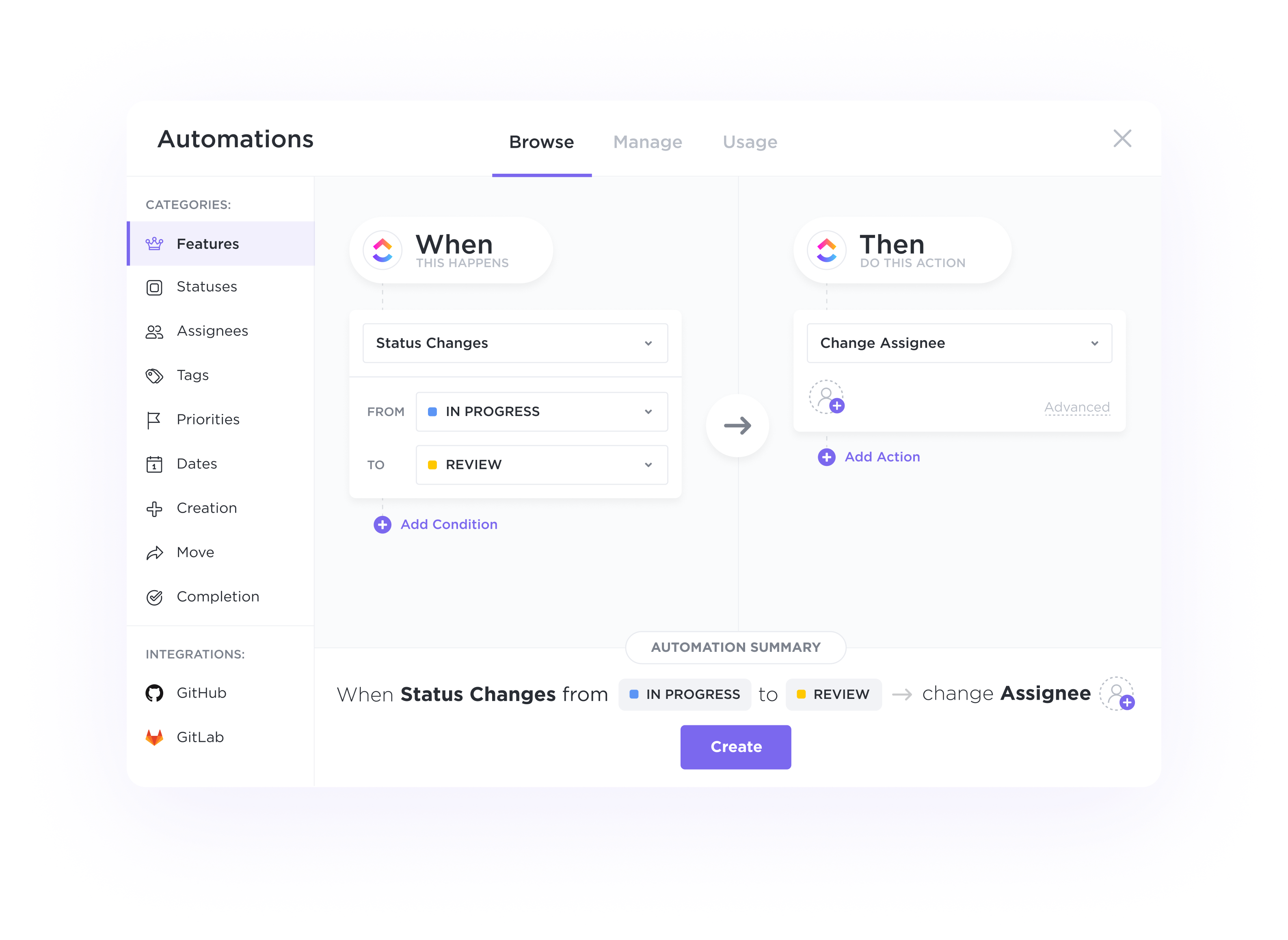Forms
Onboard customers and collect info in a snap.
Streamline your intake process, organize response data, and automatically create tasks with custom branded Forms powered by conditional logic.

Gantt Charts
Revolutionize your customer relationships with ClickUp's customizable CRM system designed specifically for Manufacturing Engineers. Streamline your processes, track interactions effortlessly, and boost your productivity with advanced features that cater to your unique needs. Take control of your client interactions and elevate your business to new heights with ClickUp.
Free forever. No credit card.
Forms
Streamline your intake process, organize response data, and automatically create tasks with custom branded Forms powered by conditional logic.

Automations
Automatically assign tasks for each stage of your pipeline, trigger status updates based on activity, and switch priorities to alert your team on where to focus next.

A CRM consolidates all customer data, including communication history, project details, and specifications in one platform. This centralization ensures that all team members have access to up-to-date information, leading to more informed decision-making and better customer service.
CRMs allow manufacturing engineers to track project timelines, milestones, and deadlines. By providing a clear overview of project progress, engineers can identify bottlenecks, allocate resources efficiently, and ensure projects are completed on time.
CRMs can assist in organizing and managing complex BOMs by storing detailed part specifications, quantities, and suppliers. This helps in streamlining the procurement process, tracking inventory levels, and ensuring accurate production planning.
A CRM can facilitate communication with suppliers, track supplier performance, and manage contracts and agreements. By centralizing supplier information, engineers can make informed decisions, negotiate better deals, and ensure a smooth supply chain process.
CRMs promote collaboration among different departments involved in the manufacturing process. By sharing project updates, documents, and feedback within the CRM, engineers can ensure alignment across teams, reduce miscommunication, and work towards common goals efficiently.
CRMs offer reporting and analytics capabilities that allow engineers to analyze production data, identify trends, and track key performance indicators. By leveraging these insights, engineers can make data-driven decisions, optimize processes, and drive continuous improvement in manufacturing operations.
CRM software offers manufacturing engineers tools for managing client relationships, tracking sales opportunities, analyzing customer data, streamlining communication, and enhancing collaboration with internal teams, ultimately improving customer interactions and increasing operational efficiency.
CRM software helps manufacturing engineers by optimizing production schedules, tracking inventory levels, and managing supplier relationships. This leads to improved coordination, resource allocation, and timely decision-making, ultimately enhancing operational efficiency and productivity on the production line.
Yes, there are CRM software solutions specifically designed for manufacturing engineers, offering features such as project management, inventory tracking, production scheduling, and resource planning to address their unique needs and challenges effectively.